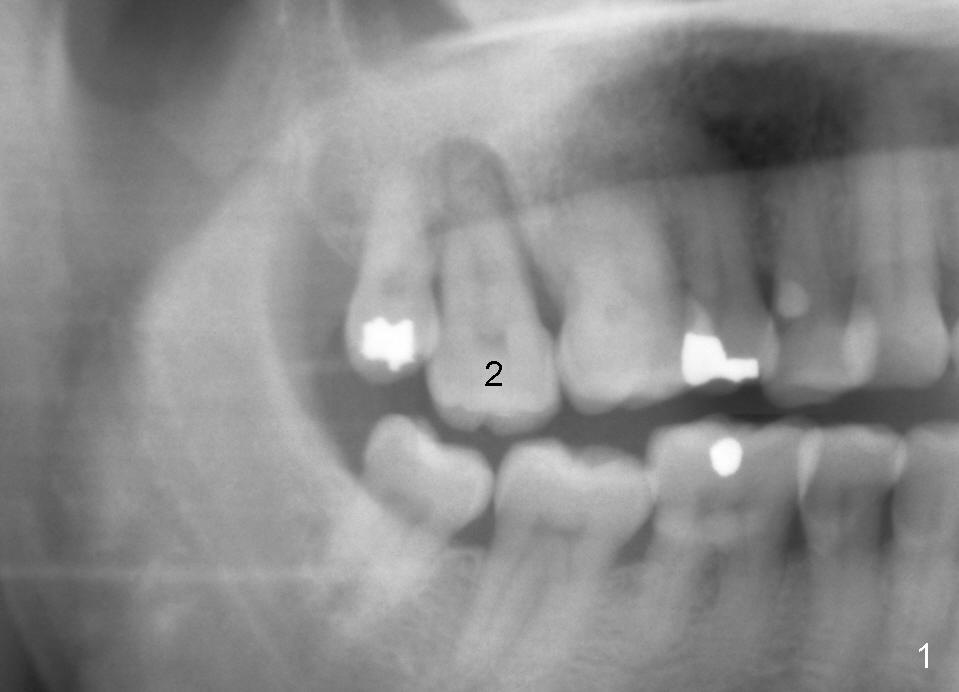
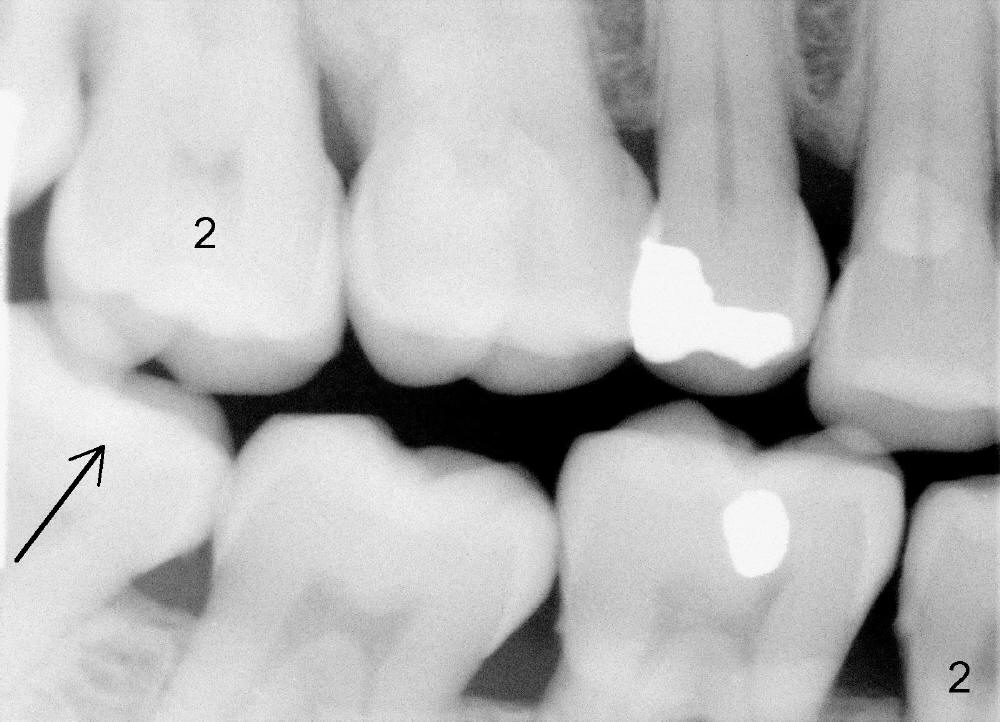
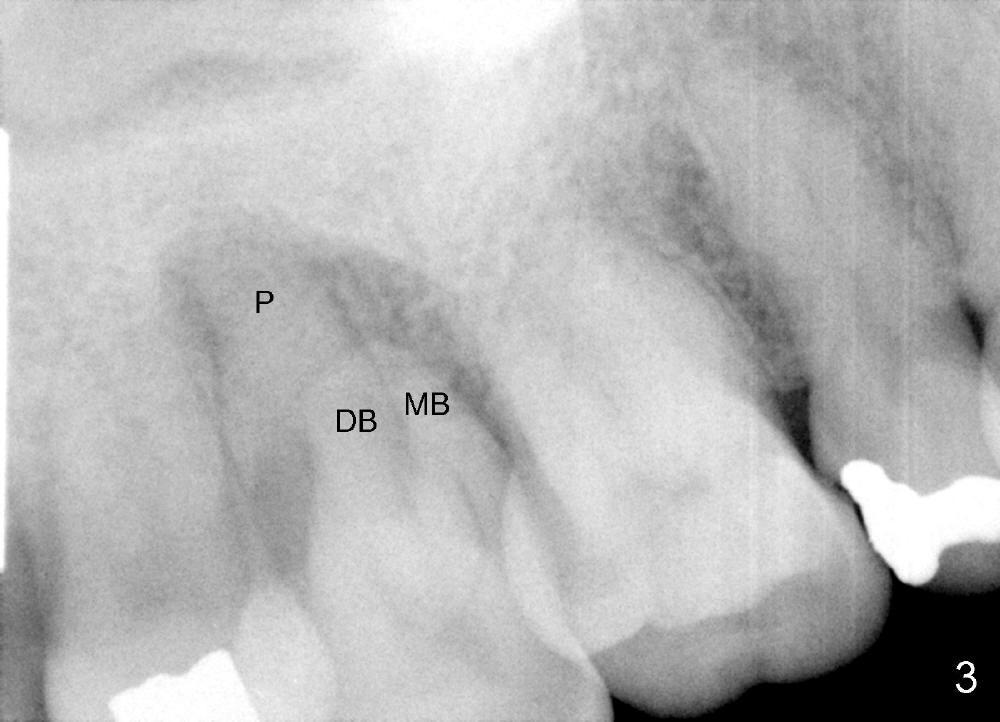
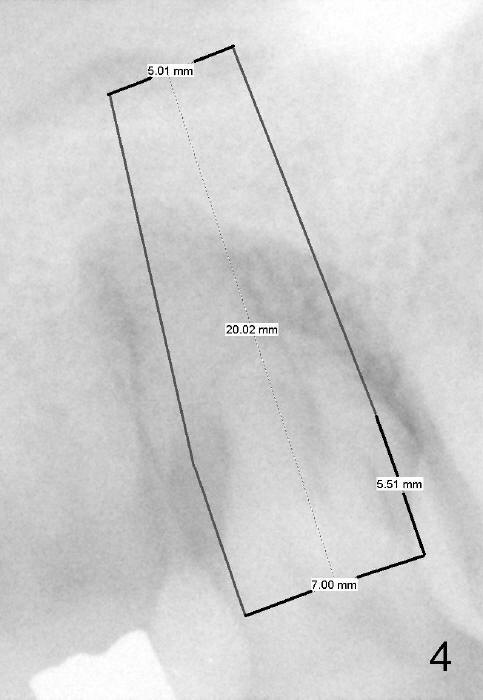
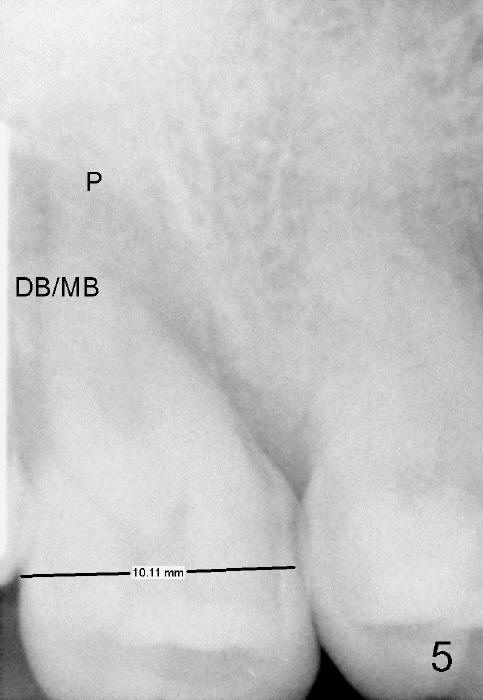
 |
 |
|
 |
 |
 |
Length of Immediate Implant
A 48-year-old man is unable to masticate on the right side for a while. The upper right 2nd molar has severe bone loss (Fig.1-3). The buccal roots are essentially exposed (photos to be taken prior to extraction). An immediate implant will be placed in the palatal socket. If the furcation between the buccal and palatal roots is large, the osteotomy site will be the buccal slope of the palatal socket.
Osteotomes or bone expanders will be used to push the buccal aspect of the septum buccally. Initial depth of osteotomy at the septum will be 8 mm and adjusted accordingly (using Bicon concave osteotomes). Based on the gingival line and the sinus floor, an implant could be as large and long as 7x20 mm (Fig.4). It is impractical. First, this long tapered implant is not available. Second, too much thread will be exposed buccally if a long implant is used. Therefore 7x14 or 17 mm will be most likely suitable for the site. The mesiodistal space is large (Fig.5). A 8 mm implant could be placed if the buccal septal bone is able to be expanded buccally. Anyway, bone graft is placed buccally and an immediate provisional is to be fabricated to cover the remaining sockets (buccal as well as palatal). The different relative position of the buccal roots (MB, DB) vs. the palatal one (P) between Fig.3 and 5 is due to different X-ray tube direction. Furthermore, the sinus floor appears not to ditch in between the root apices.
Return to Upper Molar Immediate Implant
Xin Wei, DDS, PhD, MS 1st edition 12/25/2014, last revision 12/26/2014